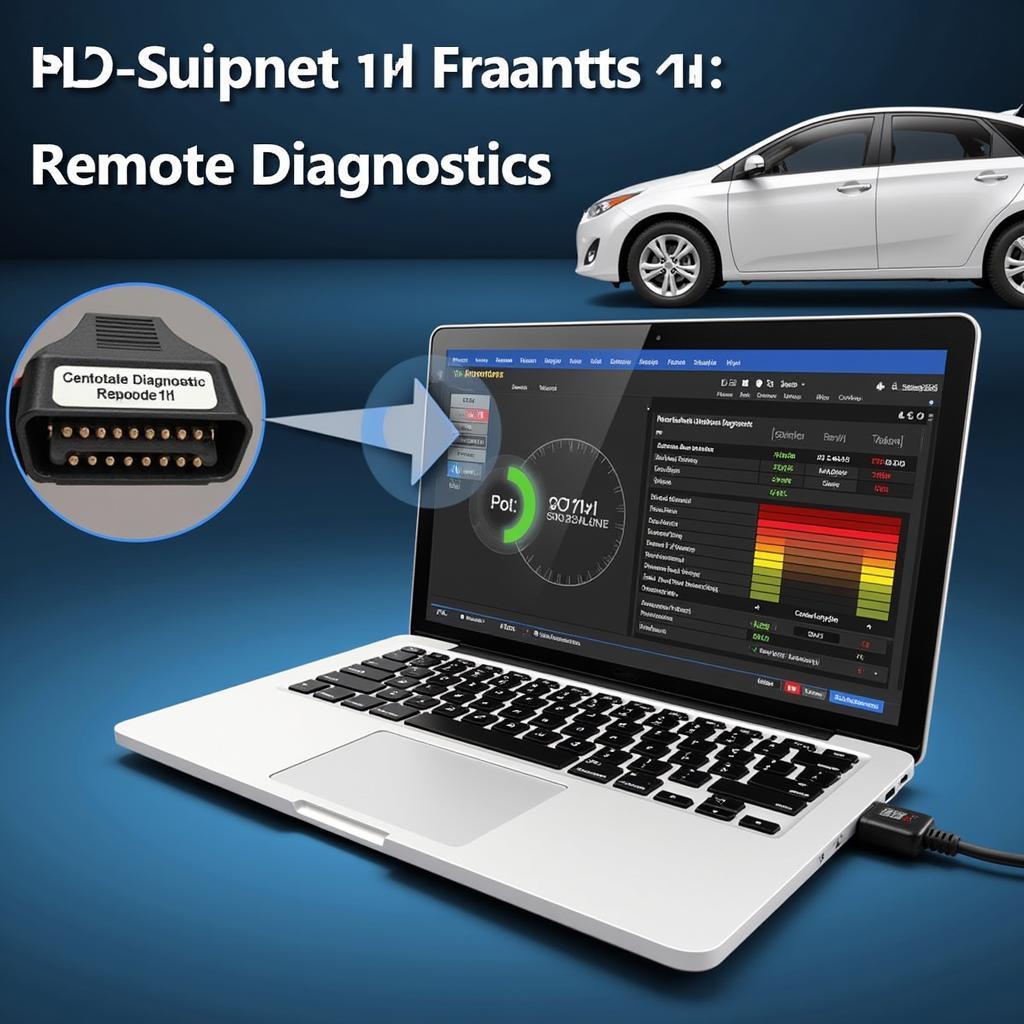Your 2001 Honda Civic’s brake warning light is stubbornly illuminated, and you’re understandably concerned. A persistent brake light is more than just an annoyance; it’s a crucial warning sign that something isn’t right with your braking system. This article will guide you through the potential causes and solutions for a 2001 Honda Civic brake warning light that stays on, offering remote diagnostic and software solutions where applicable.
Understanding Your Brake Warning Light
The brake warning light serves a dual purpose. It alerts you to a potential issue with your braking system and reminds you that your parking brake is engaged. Before diving into more complex diagnostics, ensure your parking brake is fully released. If the light persists even with the parking brake disengaged, further investigation is necessary. This could range from a simple low brake fluid level to more complex issues like a faulty ABS sensor. Ignoring this warning could lead to costly repairs down the line, and more importantly, compromise your safety.
Common Causes of a Persistent Brake Light in a 2001 Honda Civic
Several factors can trigger a persistent brake warning light in your 2001 Honda Civic. Let’s break down the most common culprits:
Low Brake Fluid
The most frequent cause is low brake fluid. This often indicates worn brake pads, which require immediate attention. Check your brake fluid reservoir, located under the hood. If the fluid level is below the “MIN” line, top it off with the correct brake fluid specified in your owner’s manual. However, simply adding fluid isn’t a long-term fix. Low brake fluid is a symptom, not the root cause.
Worn Brake Pads
As your brake pads wear down, the brake caliper pistons extend further to compensate, resulting in lower brake fluid levels. If you find yourself frequently topping off your brake fluid, it’s a clear indication your brake pads are worn and need replacement. Ignoring this can lead to metal-on-metal contact, damaging your rotors and significantly reducing braking performance.
Faulty Brake Light Switch
The brake light switch, located near the brake pedal, can malfunction, causing the warning light to stay on. This switch activates the brake lights when you press the pedal. A faulty switch might not only trigger the warning light but also prevent your brake lights from functioning correctly, a serious safety hazard.
ABS Issues
The Anti-lock Braking System (ABS) is a vital safety feature. A malfunctioning ABS module or sensor can illuminate the brake warning light. In some cases, you may also see the ABS light illuminated alongside the brake warning light. Diagnosing ABS issues often requires specialized diagnostic tools.
Diagnosing and Fixing the Problem
Here’s a step-by-step guide to diagnosing and addressing the persistent brake warning light:
- Check the Parking Brake: Ensure the parking brake is fully disengaged. This seems obvious, but it’s a common oversight.
- Inspect Brake Fluid Level: Open the hood and locate the brake fluid reservoir. If the fluid is low, add the correct type of brake fluid.
- Inspect Brake Pads: Check the thickness of your brake pads. If they are worn down, replace them immediately.
- Test the Brake Light Switch: You can test the brake light switch with a multimeter. If faulty, replace the switch.
- Diagnose ABS Issues: If the ABS light is also illuminated, or you suspect an ABS problem, consider using a remote diagnostic service or consult a qualified mechanic. Remote diagnostic tools can pinpoint the specific ABS fault code, helping streamline the repair process.
Remote Diagnostics and Software Solutions
In today’s connected world, remote diagnostics offer a convenient and efficient way to troubleshoot car problems. Some services allow certified technicians to remotely access your vehicle’s computer system, diagnose the issue, and even perform software updates or programming fixes related to the braking system. This can save you time and money, especially for issues related to ABS modules or other electronic components.
“Remote diagnostics provide a valuable tool for quickly identifying and addressing complex issues, even remotely. It’s a game-changer for modern car repair.” – John Smith, Automotive Engineer, Remote Diagnostics Specialist
Conclusion
A persistent brake warning light in your 2001 Honda Civic should never be ignored. By understanding the potential causes and following the diagnostic steps outlined in this article, you can effectively address the issue and ensure your safety on the road. If the problem persists or you’re uncomfortable performing the repairs yourself, consider using a remote diagnostic service or consulting a qualified mechanic. Don’t delay in addressing your 2001 Honda Civic brake warning light, as a properly functioning brake system is paramount for your safety.
 Remote Diagnostics for Brake System Issues
Remote Diagnostics for Brake System Issues
FAQ
-
What is the most common reason for a brake warning light to stay on? Low brake fluid, often due to worn brake pads, is the most frequent cause.
-
Can I drive my car if the brake warning light is on? It’s not recommended. A persistent warning light indicates a potential problem with your braking system, which can compromise your safety.
-
How often should I check my brake fluid level? It’s a good practice to check your brake fluid level at least once a month.
-
How much does it cost to replace brake pads? The cost varies depending on the type of brake pads and labor rates, but typically ranges from $100 to $300 per axle.
-
What is a brake light switch? The brake light switch activates your brake lights when you press the brake pedal.
-
Can remote diagnostics fix my brake warning light issue? In some cases, yes. Remote diagnostics can identify software-related problems and even perform necessary updates or programming fixes.
-
What should I do if I’ve tried everything and the light is still on? Consult a qualified mechanic for a thorough inspection and diagnosis.
